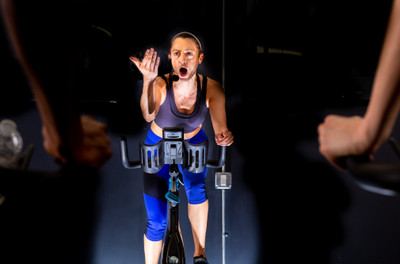
Communication Words of Wisdom
Posted by Spinning® on Aug 28th 2019
Becoming an exceptional Spinning® instructor doesn't just happen overnight; it requires hard work, continuing education, and identifying your strengths and weaknesses. But regardless of your skills in every aspect of coaching, the ability to really reach your students comes down to one thing; communication.
Strong communication skills are the cornerstone of leading successful classes. Instructors who simply give a collective "Wonderful job, everyone” or the occasional “woo-hoos!" may not actually be encouraging students in the ways we assume. In fact, sports psychology indicates that because these cues come across as ambiguous and insincere, non-attached adjectives and global "praise" actually decrease performance and rapport over time.
Just as it takes effort and dedication to improve your level of fitness, becoming a more effective communicator also takes work. You may be aware of your verbal communication "habits." For example, the tempo and volume of your voice probably changes throughout class, and you may employ repetition to make a point.
Nonverbal communication is just as important as our words. In fact, most cultures see non-verbal communication as more potent than verbal communication. Whether it's intentional or not, nonverbal communication usually ends up accounting for almost 90% of each message you generate.
Because many of us aren't keenly aware of how our words are received by listeners, these tips can improve your communication skills-and make you a more effective instructor.
- Try to employ greater variety in your cues to stave off any monotony in your language. Select and employ synonyms for common words like “strength" and "power." Students are likely to take notice of something they haven't heard before, even if it's just saying the same thing in a different way.
- Greet all students and make deposits to what Stephen Covey, author of Seven Habits of Highly Effective People, calls their "emotional bank account" By doing this, you'll build respect, trust, credibility, and rapport.
- First impressions are important. A professional look increases the odds that you'll be received as a good instructor, and chances are this will boost your confidence and further boost your credibility.
- Looking people in the eye exudes assurance and professionalism. As you visually sweep the class make direct eye contact with your students, hold their gaze and smile.
- The way you hold your body says a lot about you. As a Spinning® instructor, you should avoid aggressive styles of nonverbal communication like placing your hands on your hips or crossing your arms in front of your chest. When your hands are placed at your side or held behind you, you portray a confident, relaxed, and receptive communication style.
- If you're a talker, challenge yourself to cut the chitchat and observe what happens when you do. When you let the music, moment and emotion stand, your riders will often tum their attention away from you and put it where it should be; on themselves.
- Change your position. From time to time, coach off the bike or try standing at the back of the room. When you coach from behind the class, you empower your students to become accountable and ride for themselves.
- Stand next to people as they ride and notice how their energy changes. Touch can be powerful, but always ask for permission first. Touching a person on their back can help them quiet their technique if they are bouncing. It can also be used to create a more stable breathing pattern.
Ultimately, strong verbal and nonverbal communication skills come together to help you build relationships. Developing relationships takes time and patience, but also makes you a more effective Spinning® instructor. While you can cue a whole class or make eye contact with an individual to emphasize a point, the most meaningful conversations are those that occur on a one-on-one basis.
Timing is a critical aspect of interpersonal communication. By assessing a student's eyes, hands or shoulders you can gather clues that enable you to determine if the time is right to begin a conversation. If it is and you've identified a coaching opportunity use the following approach to drive your point home.
- Start with positive reinforcement (example: "I love your energy.")
- If a correction is needed, be constructive. Critique the deed, not the doer (example: ''Add some resistance to take the bounce out of your pedaling. This is help you build strength."
- Finally, once your student has executed your cue, affirm their skill (example: "You've got it! Now you're riding the bike instead of the bike riding you. You're in control. Extend this control through your entire ride to get the most out of it.”)
As Spinning® instructors, coaching is in our blood. By improving our own communication and improving our own communication and relationship-building skills, we become more effective instructors by fostering an inspirational and enjoyable experience. Take an honest and close look at your own teaching techniques. Solicit student feedback. Videotape or record a class that you teach.
These techniques help you really see and hear how you are expressing your ideas both verbally and non-verbally. After all, we can only grow when we are brave enough to face our true selves.
Written by Joey Adams and first published in August 2005.
